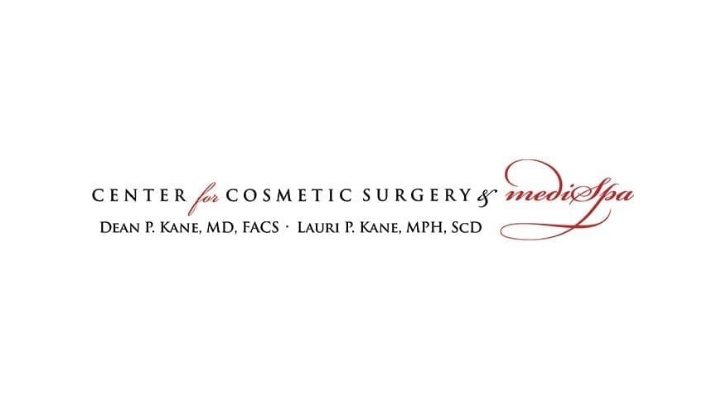Plastic Surgeon Dr. Dean Kane of Baltimore Answers Question Regarding Sagging Lower Eyelids
Q. Hi there. In my late 30’s I am noticing some changes. My upper eyelids are starting to sag a little, and if you will notice, my left more so than my right. Also, my lower lids seem more crepey, especially when I smile. I’ve had Botox in several different places to try and correct this, but it’s not really working. Going under the knife isn’t an option and my skincare regimen is superb. Suggestions?
A. While a in-person examination is required, you appear to have ancestry with thin, northern european skin, light eyes which is more prone to early aging changes.
The process of aging is the passive inability for your body’s tissues to repair and regenerate themselves. The act of rejuvenation is to actively reverse and dynamically assist the repair of your tissues on a daily basis. When significant laxity exists, surgical skin and soft tissue redraping or lifting are required.
Facial Aging develops from the 5 different layers of the skin, fat, muscle and bone.
During the first 20 years or so of life, the body genetically determines how to mature and repair a constantly changing “face” including all these layers (as it does elsewhere in the body). Thereafter it remains robust in repairing itself from injury but the accumulation of environmental, health and nutritional exposure will add to the passive inability for the body to care for itself after 30. This is when physical changes such as skin laxity, irregular pigmentation, lines and wrinkles and skin diseases occur. We now have many options to rejuvenate the layer or layers of the face which need care or stimulation to reverse the aging trend.
1. The top layer or stratum corneum of the epidermis is the rough, pigmented layer of the skin; creating most of the depth of the wrinkle.
-Exfoliation is best for this using:
-microdermabrasion,
-Retin-A (ZO Obagi Skin Health System), which also renews and regulates improved function of the deeper epidermis,
-Some lasers and chemical peels.
2. The second layer is the dermis which thins with aging. The natural collagen, elastin and hyaluronic acid (which hydrate and toughen the skin) are thickened by the use of:
-fillers (Restylane and Juvederm), or
-Retinoids (ZO Obagi Skin Health System), which also renews and regulates improved function of the deeper dermal skin cells.
-Sculptra properly managed is the latest sensation in stimulating firming and thickening of the dermis
-Thermi RF is a non – surgical option to tighten skin using a micro-invasive technique called ThermiTIGHT.
3. The next layer or fat also thins or droops with age and maybe:
-filled (Restylane and Juvederm), fat grafting or
-redraped (threadlift, short-scar, traditional, endoscopic face / neck / brow lifts / cheek)
– LipoContouring of the face and neck with or without fat grafting may provide the balance and contour you seek without general anesthesia.
4. The muscle which creases the skin into wrinkles and folds is weakened and rebalanced with
-Botox or similar injectable muscle relaxers like Dysport or Xeomin.
5. Bone also undergoes a dynamic process of resorption, thinning and descent. Options for cosmetic enhancements include:
-implants
-structural fillers, particularly like Radiesse (bone mineral)
-volumizing gel fillers like Juvederm and Restylane
6. Facelift, necklift and forehead lift are surgical procedures which include:
-an incision along the periphery of the tissues
-a suspension or re-positioning of the underlying soft tissues, and
-a redraping of the skin with removal of skin excess.
A sub-group to the facelift is the mid-face lift. This is used to detach the soft-tissues of the cheek which have descended, separated and lost volume and suspend them to the lower orbital rim. Generally, the fat pockets under the eyes are trimmed or added to the volume of the cheek and the eyelid skin is redraped.
Chemical peels and laser tightening are single, “static” attempts to “jump-start” the repair system into collagen formation. They should be performed every 3 months in order to achieve a more dynamic stimulation of the immune system.
Everyone needs one or more layered improvement and in personalized combinations to achieve their optimal result. You can understand why it takes a talented individual, preferably a Board Certified Plastic Surgeon or ENT Facial Surgeon with great experience to evaluate your needs and find a plan that works best for you.
All surgical, minimally invasive and non-invasive procedures and their combinations should be discussed following a proper examination with a well versed, Board Certified Plastic Surgeon who performs all of these options so you will not receive a biased approach because he limited in his skills.
This information is not meant as medical advice. It is provided solely for education. Our practice would be pleased to discuss your unique circumstances and needs as they relate to these topics.



